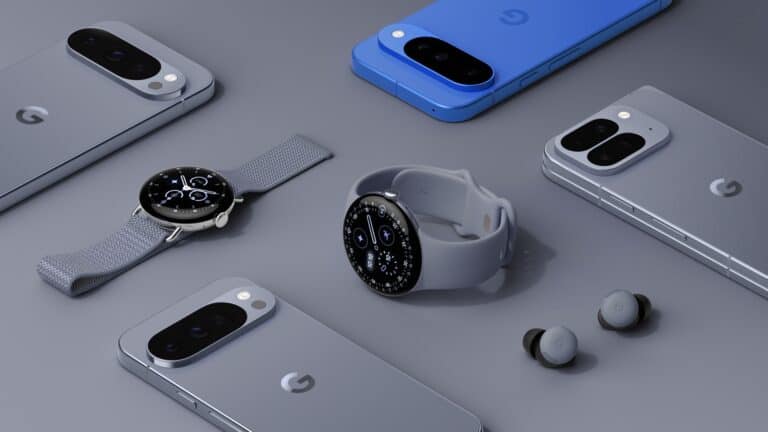The new series of Google Pixel phones has been unveiled. Visually, little has changed; the real progress is in the software.
During Google’s presentation of the latest Pixel series, it became clear once again who the company really has in mind: potential iPhone-to-Android switchers. After the Pixel 9 phones already received a generous helping of Apple genes in their appearance, the tone has been set. Every Pixel 10 variant looks more like an iPhone than any other Android device does apart from perhaps some Nothing phones. As the maintainer of the Android platform, Google is also able to generate some form of cohesion between hardware and software, something that is once again evident with the new Material 3. Just like Apple, the MagSafe-compatible Qi 2 support comes with a layer of branding, namely “Pixelsnap.” Existing iPhone users will therefore not have to get rid of all their peripheral devices.
Small tweaks
We were positive about the Pixel 9 series, from the regular Pixel 9 to both Pro variants and the foldable Pixel 9 Pro Fold. Performance was only noticeably worse than Qualcomm-powered competitors in benchmarks and heavier workloads, while battery life was mostly acceptable (or exceptionally good, as was the case with the Pixel 9 Pro XL). Google is once again promising impressive battery life, with 30+ hours for all variants. Each battery is around 5,000 mAh, supports up to 30W charging (45W for the Pro XL) and comes with the new Google Tensor G5.
This Tensor G5 is said to be up to 60 percent faster when it comes to TPU-driven AI performance, while the CPU is up to 34 percent faster. We’ll have to see when we actually get to test the phones whether this is a significant difference compared to previous Pixel phones.
Google is making it easier to switch from iPhone to Pixel. Anyone who purchases the Pixel 10 series via GoogleStore.com can already prepare data for the switch. Everything from iOS passwords and wallet items to app data can be transferred. In addition, Google is introducing contextual tips to further simplify the (usually quite drastic) change.
Software (and AI, of course)
As is often the case with Google, the focus during the presentation is really on the software. Gemini is constantly improving, while the Google AI Pro subscription now gives access to much more than just LLM’s. Think of NotebookLM, which converts documents into podcasts, or Veo 3 Fast for generating AI videos.
A more concrete advantage of the Pixel 10 series is the new Camera Coach. This digital advisor is essentially a toolset to help you take your photography to the next level. Think of suggestions for framing the image slightly differently or choosing a different camera setting. Group selfies also feature the option to choose the best pose or facial expression for each participant and combine them. This simplifies the process of taking a group photo when “Add Me” from the 9 series is not practical.
Conclusion: refinement all around
It has become commonplace in the smartphone landscape: steady, somewhat slow improvement. There simply hasn’t been a major breakthrough since we collectively switched to screens that fill the front of the phone from top to bottom and camera systems that protrude above the chassis. As such, the new Pixel series is familiar and, above all, an upgrade for those who have been using their current phone for two years or more. The difference this year is that it’s also more appealing than ever for iPhone users to make the switch.
We will return to these devices in a later article once we have physically used them. The same applies to the new Pixel Watch 4 (with a curved display) and the Pixel Buds 2a.
Read also: Review: How mature is the Google Pixel 9 ecosystem?
